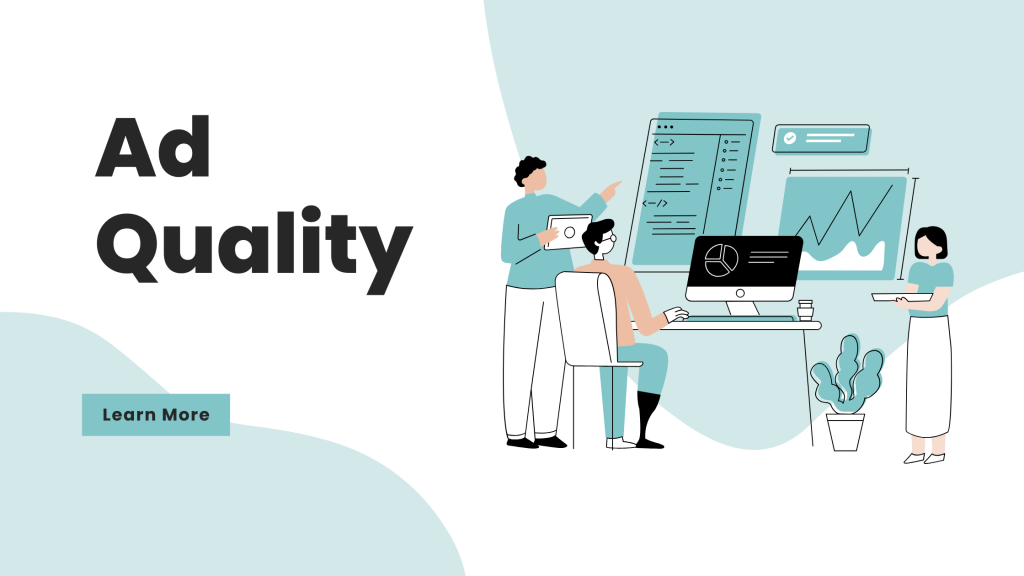Introduction to Ad Quality Monitoring
In the fast-paced digital world, ad quality is paramount for ensuring a positive user experience and maintaining the integrity of your platform. The quality of ads directly impacts user satisfaction, platform credibility, and revenue generation. As such, it is crucial to implement a robust system for monitoring and maintaining ad quality on your platform.
Understanding Ad Quality
Ad quality refers to the relevance, engagement potential, and overall user experience associated with the advertisements displayed on your platform. High-quality ads are not only relevant and engaging but also align with the platform’s values and user expectations. Poor ad quality can lead to negative user experiences, reduced trust, and potential revenue loss.
Components of Ad Quality
- Relevance: Ads should be contextually relevant to the content and interests of the audience.
- Engagement: High-quality ads encourage user interaction and engagement.
- User Experience: Ads should not disrupt the user experience or cause annoyance.
- Brand Safety: Ads must not contain inappropriate or harmful content.
Strategies for Monitoring Ad Quality
Monitoring ad quality involves a combination of automated systems and human oversight. Here are some strategies to effectively monitor ad quality on your platform:
Automated Systems
Automated systems can help in real-time monitoring and analysis of ad quality. These systems use algorithms and machine learning to evaluate ads based on predefined criteria.
- Algorithmic Analysis: Use algorithms to assess the relevance and engagement potential of ads.
- Real-time Monitoring: Implement systems that provide real-time feedback on ad performance and user interaction.
- Data Analytics: Utilize data analytics to gain insights into ad performance and identify trends.
Human Oversight
While automated systems are effective, human oversight is crucial for nuanced evaluation and decision-making. Human reviewers can provide insights that machines may overlook.
- Content Review: Employ teams to manually review ad content for relevance and appropriateness.
- User Feedback: Collect and analyze user feedback to understand ad performance from a user perspective.
- Regular Audits: Conduct regular audits of ad content and performance to ensure compliance with standards.
Maintaining Ad Quality
Maintaining ad quality requires ongoing efforts and adaptability to changing user expectations and market dynamics. Here are some practices to maintain high ad quality:
Setting Clear Standards
Establish clear and stringent standards for ad content and performance. These standards should align with your platform’s values and user expectations.
- Ad Guidelines: Develop comprehensive guidelines that outline acceptable ad content and practices.
- Compliance Checks: Regularly check ads for compliance with established guidelines.
- Feedback Loop: Create a feedback loop for advertisers to understand and adhere to quality standards.
Continuous Improvement
Continuously improve ad quality by leveraging data, feedback, and technological advancements. Adapt to changes in user behavior and industry trends.
- Data-Driven Insights: Use data insights to refine ad strategies and improve quality.
- Technology Upgrades: Invest in technology that enhances ad quality and user experience.
- User-Centric Approach: Focus on user satisfaction and adapt strategies to meet evolving expectations.
Challenges in Ad Quality Monitoring and Maintenance
Despite best efforts, challenges may arise in monitoring and maintaining ad quality. Addressing these challenges is crucial for sustained success.
Common Challenges
- Ad Fraud: Ad fraud poses a significant threat to ad quality and platform credibility.
- Dynamic Content: Managing dynamic content and ensuring relevance can be challenging.
- Balancing Revenue and Quality: Striking a balance between revenue generation and ad quality is often difficult.
Overcoming Challenges
To overcome these challenges, platforms must adopt a proactive and strategic approach. Collaboration with industry experts and leveraging technology can help address these issues.
- Fraud Detection Systems: Implement advanced fraud detection systems to identify and prevent ad fraud.
- Content Management: Use sophisticated content management systems to ensure ad relevance and quality.
- Revenue Optimization: Develop strategies that prioritize both revenue and ad quality.
Conclusion
Ensuring high ad quality on your platform is essential for maintaining user satisfaction, platform integrity, and revenue generation. By implementing robust monitoring systems, setting clear standards, and continuously improving strategies, platforms can effectively manage ad quality. Despite challenges, a proactive approach and strategic planning can help overcome obstacles and ensure sustained success in the dynamic digital landscape.






